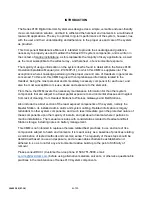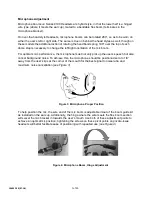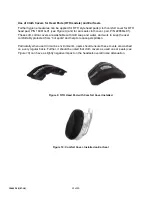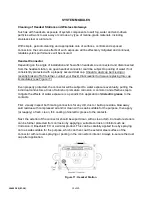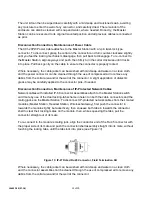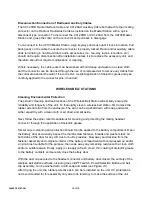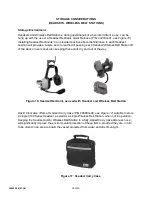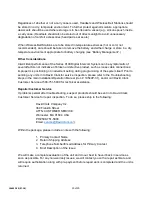
19602P-99 (07-18)
18 of 20
Charging Units are not rated for marine use and as such, measures should be taken to fully and
completely protect charging units from the elements or else should only be deployed on shore in
an office environment.
Charging Units should be periodically inspected for debris or residue inside the battery
compartments and/or on the charging terminals. Caution should be exercised not to
compromise the protective plating on the battery terminal through use of abrasive methods of
cleaning. Use isopropyl alcohol and/or contact cleaner on a cloth or swab to remove any tarnish
or evidence of oxidation from the battery terminals, then use compressed air while holding the
unit at a downward angle to remove any loose dirt or debris from these compartments.
There are many factors that can affect the useful life of Lithium batteries including but not limited
to extremes of heat or cold (operation or storage conditions), exposure to water or corrosive
environments or chemicals, state of charge prior to storage, and/or age of battery prior to use.
Prior to use (either in wireless belt station or in charging unit), ensure that no dirt, debris, or
degree of oxidation/corrosion is present on the charging terminals. If present, clean
appropriately and/or remove oxidation with contact cleaner or isopropyl alcohol on a cloth or
swab.
A battery that displays swelling is a normal indication of the end of that battery’s useful life, at
which time the battery should be discarded appropriately (they are considered non-hazardous
waste and safe for normal municipal waste disposal, but are also acceptable through battery
recycling programs…all local laws and rules should be adhered to.)
For complete information necessary to enact an appropriate battery management plan, please
refer to the batteries Material Safety Data Sheet, available as a downloadable pdf at
http://www.davidclarkcompany.com/files/literature/MSDS,%20Varta%20EZ%20Pack.pdf
Summary of Contents for 9100 SERIES
Page 2: ......

